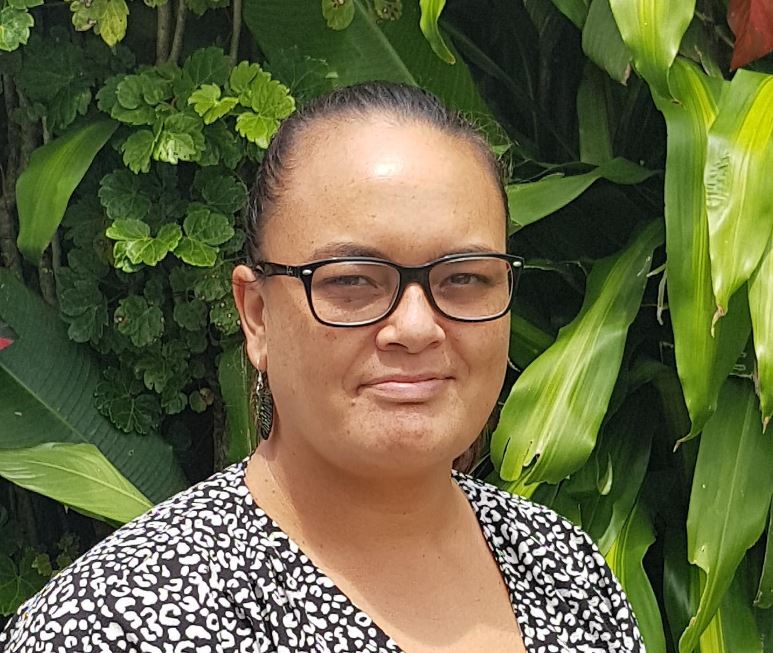Time for cameras on longliners: NGOs
Friday 2 December 2022 | Written by Caleb Fotheringham | Published in Environment, National, Technology

Ministry of Marine Resources secretary Pamela Maru. SBMA/22120116
A Covid-19-induced break in the Western and Central Pacific Fisheries Commission’s (WCPFC) observer programme is evidence cameras are needed on ships, says an environmental NGO.
In April 2020 the WCPFC – the body that oversees the Western and Central Pacific Ocean’s tuna fishery that includes Cook Islands – suspended its observer programme.
The Commission has made the decision to get observers back on boats and resume its programme on January 1, 2023, at the 19th Regular Session of the WCPFC in Da Nang, Vietnam this week.
An observer’s job is to collect objective catch data on board fishing vessels. Due to travel restrictions and the risk of transmitting Covid-19 the WCPFC withdrew the requirement for observers to be onboard ships. The suspension has meant an absence of observers for close to three years in the region.
Pre-pandemic there was a requirement for observers to be on 100 per cent of purse seine ships and 5 per cent of longliners.
Dave Gershman from the International Fisheries Conservation Programme at The Ocean Foundation said the experience showed that electronic monitoring was needed.
“Cameras are not going to be affected by Covid to the same degree that observer systems are, so hopefully this kind of jump starts that effort to really automate,” Gershman said.
“It’s not going to take over the observer’s job, there are only some things that human observers can do but certainly it’s time to add in electronic monitoring on fleets.”
Ministry of Marine Resources secretary Pamela Maru, who is leading the Cook Islands delegation in Da Nang, said electronic monitoring was a useful tool that could complement independent fisheries monitoring.
“However, the need for human observers remains to be able to collect data that cameras cannot, for example, biological samples,” Maru said.
“Observer programmes provide employment opportunities contributing to the livelihoods and socioeconomic benefits for Pacific Islands.”
Maru also said electronic monitoring was costly to implement and would likely take a few years before economies of scale are developed in the region.
She said the Cook Islands was eager to have observers redeployed and collecting data and also ensuring compliance with management measures and regulation.
Outgoing WCPFC executive director Feleti Penitala Teo said getting observer coverage on longline vessels was always difficult.
“That’s why the commission is moving very quickly on electronic monitoring. So that at least there is an alternative option to provide the data gaps on longline.
“Some countries have already trialed it but the Commission as a whole hasn’t quite got the standard adopted.
“What the Commission needs to do is to set those basic standards and criteria so that when they are fully implemented, the member countries can choose or pick whatever technologies that they want to collect the data, but it has to be compatible with a standard that the commission has set.”
Gershman said on a longline boat a series of cameras could be pointed towards the rail while fish are brought on deck.
He said that cameras could record the species, the size, how many hooks are being used, and if by-catch was cut free.
Glen Holmes from Pew Charitable Trusts said all of Australia’s tuna fleets are observed exclusively by electronic monitoring and it had been successful.
Gershman said the cameras in Australia had also improved the data that was being self-reported by vessels.
“If people know they’re being observed, they tend to report a little bit more fastidiously, there’s a lot of benefits to have this forward.”
Senior fisheries programme officer at World Wildlife Fund, Bubba Cook said cameras could supplement and, in some cases, replace observers on longline vessels.
Cook said observers did not like to serve on them because they were uncomfortable and dangerous to work on.
He also said the pre-pandemic requirement of five per cent observer coverage on longliners was “woefully inadequate”.
“Five per cent in itself is significantly insignificant to reach stock assessment standards, much less any compliance objectives, so the only way we’re going to get any visibility on what’s going on, on these longline vessels out at sea is to apply electronic monitoring. Get cameras on these vessels so you can get a better idea, a better understanding of what's actually happening at sea.
“The technology is robust, it is far more cost-effective than it ever has been and the real resistance to it at this point is almost entirely political and philosophical.
“I think anyone can relate to not having someone looking over your shoulder while you're at work, but at the same time this is a public resource, it belongs to all of us and we have a responsibility to take care of that resource.”
- Caleb Fotheringham in Da Nang, Vietnam. Fotheringham’s trip was made possible by The Ocean Foundation.




















































